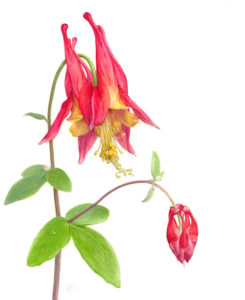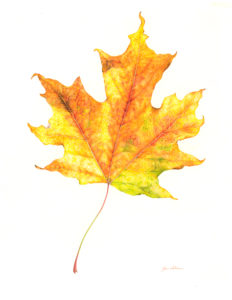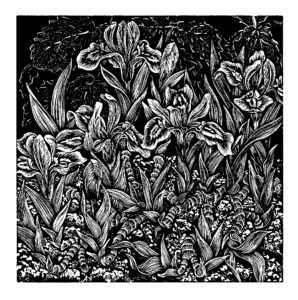I confess to an abiding love for “scientific” drawings of nature.
If I’m in your cottage I’ll soon retreat to a corner to savour the drawings of birds in those Peterson field guides that every cottage has. Before one recent Christmas, I pecked and flapped around my wife until she got the hint and bought me a full-sized, chromolithograph reproduction of John James Audubon’s Birds of America. It’s so big and heavy that if it fell over it could well crush most birds, or, for that matter, my wife.
Plants are another rich subject for scientific drawings, as seen in Art of the Plant, a new exhibition at the Canadian Museum of Nature. Forty-eight drawings, paintings or prints show a world of flora, from germination to termination. There are flowers, fruits, shrubberies, tree, lichens and one mushroom — a lovely little pink-topped species, named the yellow-footed boletus, in watercolour by Henry A.C. Jackson of Montreal.
Jackson is among artists who were invited to submit to the exhibition. The remaining 26 pieces are from artists whose submissions were juried — though don’t take that to mean those pieces are somehow lesser.

Rosalind Allchin. Columbine flower and bud. Watercolour.
The juried entries include a luscious arrangement of the flowers, leafs, stems and berries of the woodland strawberry, by Nellie Sue Potter of Toronto. The various elements of the plant — which grows in almost all of Canada, as shown on a small map that helpfully accompanies each piece — were drawn by Potter in coloured pencil, on film. The film gives the arrangement a luxurious, opalescent depth. Potter also excels on her watercolour drawing of a germinating seed of a white oak, which reaches from the nascent, rhubarb-coloured leaves to the subterranean tip of the single root. Roots are seen in many of the pieces. Sheila Siegerman’s buttercups are anchored by mops that would have been worthy of the Beatles c. 1964.
Roots are key examples of how these illustrations, with their dual nature of the scientific and artistic, have grown from different, er, roots.
“Botanical illustration emphasizes the scientific record and botanical accuracy to enable identification of a plant,” says a museum release. “Botanical art emphasizes the aesthetic value of the plant or flower and is botanically accurate but does not necessarily include ALL the information required by botanists (e.g. roots, seeds, stems, leaves).”
That’s a dry way of saying that art, left to grow in its natural state, seeks a different sort of light than science, one that illuminates more than what is literally there in form or fact.

Jan Salmon’s Sugar Maple Leaf.
(The museum release punctiliously adds, “Floral painting is not considered botanical art. This style of painting may be more impressionistic and the focus is neither plant identification, botanical accuracy nor education.” Nor education? Nobody has learned about flowers, nature, human expression or even sexuality by looking at a Georgia O’Keeffe calla lily or poppy? Harrumph.)
Esoteric quibbles aside, the best of botanical art achieves the parallel goals of, as the museum puts it, “both scientific accuracy and artistic expression.”
I’d never heard of the cucumber tree, which grows in Ontario, nor did I know it was a threatened species. Nor had I heard of the threatened Kentucky coffee-tree, as, frankly, I’ve spent more time lolling around the Kentucky bourbon bushes. I also learned there’s such a thing as the Maximilian sunflower, painted by Ottawa’s Kerri Weller in oils on a black background, which made me think of the foliage of Henri Rousseau.
I found aesthetic joy in the graphite shadows of a Canada goldenrod drawn by Ottawa’s Rosalind Allchin, or Ottawa-artist Sengmany Phommachakr’s lovely staghorn sumac, with its head-like pod and its branches extended like arms in a welcoming embrace.
I found the biggest bang in the smallest pieces in the exhibition, in wood engravings by Gerard Brender À Brandis, of Stratford, Ontario. His fairy slipper and dwarf lake iris, printed on palm-sized rag paper, are densely packed with the delicate flowers rendered in black forms and white lines. They’re a tiny demonstration of the exhibition’s graceful dance of reality and impression, where art is subjective, and science is not.
Art of the Plant continues to Oct. 14.

Wood engraving of a dwarf lily by Gerard Brender À Brandis






